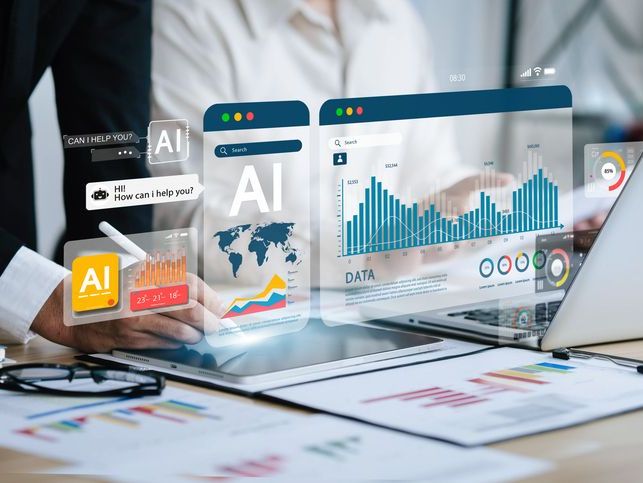There was a time not too long ago that the thought of ActivTrak being recognized in major analyst research seemed like a pipe dream, let alone the possibility of being named in five Gartner Hype Cycles. Almost any scale up technology company would be envious, and while we are thrilled to be recognized, it highlights our number one challenge as a business — our market’s identity crisis.
When I started at ActivTrak nearly four and a half years ago, the company fit squarely in the employee monitoring market. At that time, it was a small, founder-led startup with solid unit economics but a relatively small total addressable market. Even then, the founders leaned away from heavy surveillance features like keystroke logging and webcam recording and experimented with descriptors such as “behavioral analytics.” That term, however, had been claimed by web analytics vendors, so it required lots of explanation and caused a fair amount of confusion.
What ultimately became clear is that insights derived from digital activity data can answer more strategic questions than how many hours people work and whether or not they comply with their company’s digital activity policies.
The Work From Home Revolution
According to U.S. Census Bureau data, the share of Americans working from home more than tripled from 2019 to 2021, going from 6% to 18% for an increase of 19 million workers. Almost overnight, this opened up a huge market opportunity for companies to provide insight into how and when remote employees worked. And ActivTrak was no exception. Our business saw hyper-growth in 2020 as business owners and operations leaders scrambled to get visibility into their remote workforces — often with little hesitation regarding how employees might react. The need far outweighed the risk.
The Great Resignation
In 2021, this reactive buying evolved into more thoughtful and deliberate planning and investment as the great resignation shifted focus to employee experience and retaining top talent. A Pew Research Survey noted that the nation’s “quit rate” reached a 20-year high in November 2021. Instead of worrying if people were working enough, HR leaders shifted focus to employee burnout and attrition, and how to identify early indications of quiet quitting. The same data that provided visibility into how people worked remotely during the pandemic could now be used to uncover overutilization, fatigue and distraction — but only if it met new standards of privacy to overcome “monitoring” concerns. The risk outweighed the reward.
This is where ActivTrak stands out from the competition. Unlike other vendors, our privacy-first features allowed companies to customize privacy configurations ranging from screen captures triggered by conditional alarms for compliance, to data anonymized at the team or company level. And this is what helped us evolve from an employee monitoring application to an award-winning workforce analytics solution that helps companies unlock insights to improve business outcomes.
A Bear Market
Fast-forward to the last year, the Fed raised rates more than 5% since March 2022, marking one of the steepest hike cycles in four decades according to J.P. Morgan’s 2023 midyear outlook. These increases, along with inflation and talks of a full-on recession, put CFOs back in the driver’s seat. Companies slashed technology budgets and headcount and, once again, there was a critical need for digital activity data to inform headcount capacity planning and technology usage trends. While the market for SaaS tools remained strong, companies lacked insight into software usage — thus missing opportunities to save money on licensing without disrupting business. That same digital activity data could be used to understand training gaps and ensure technology investments were fully leveraged.
Hybrid is Here to Stay
According to Forbes Advisor statistics, as of 2023, 12.7% of full-time employees work from home, while 28.2% work a hybrid model. So how do businesses fare in this new normal? From a compliance perspective, most companies are well on their way to figuring out how to operate a hybrid digital workforce; understanding performance is another story. The irony is, workforce analytics data can be used to inform both needs, but is too often only consumed by HR and IT departments — and rarely by business team leaders. Team leaders who integrate workforce analytics data with other business data are discovering all kinds of ways to eliminate blind spots when it comes to managing hybrid team performance. Across our own customer base we typically see strong adoption in industries where there is a lot of process work and the primary goal is to make those processes more efficient and productive.
For example, combining digital activity data with business KPIs allows companies to develop new leading KPIs vs only relying on lagging KPIs to derive insights such as:
- How much collective time is saved on tasks when they are partially or fully automated? Can that time be reallocated to increase team productivity? What would the ROI be with an investment in AI to automate more complex tasks?
- What is ideal load balancing across team members? Are some employees overutilized while others can take on more work? How can better insights improve capacity planning and forecasting?
- Do aggregate employee search trends highlight a training or broader business opportunity? True story: an ActivTrak logistics company customer noticed that team members were frequently visiting the National Weather Service website to help customers understand why shipments were delayed due to inclement weather. They are now developing a way to incorporate weather patterns into their automated shipment estimates.
Employee Monitoring → Workforce Analytics → Hybrid Team Performance
It’s clear that the driving need for collecting digital activity data still starts with a simple premise: business leaders need visibility into how work gets done. With teams in different geographic locations, leaders have more blindspots than ever before. What started with “are my teams working?” moved to “are they burning out from working too much or being on Zoom all day?” and evolved to “how can I measure leading indicators to improve performance in real-time?” At ActivTrak, we refer to this as measuring inputs and outputs side-by-side. You’ll hear a lot of business leaders boast about only measuring outputs. The problem with that philosophy is by the time you have the outputs, it’s too late to change the outcome.
Which brings me back to the identity crisis. The employee monitoring space has evolved rapidly from an emphasis on reactive oversight to proactive insights that help teams perform better — and put employees’ ability to succeed first. Today it may take five Hype Cycles to tell that story, but the narrative is changing quickly, with solutions like ActivTrak leading the way.





